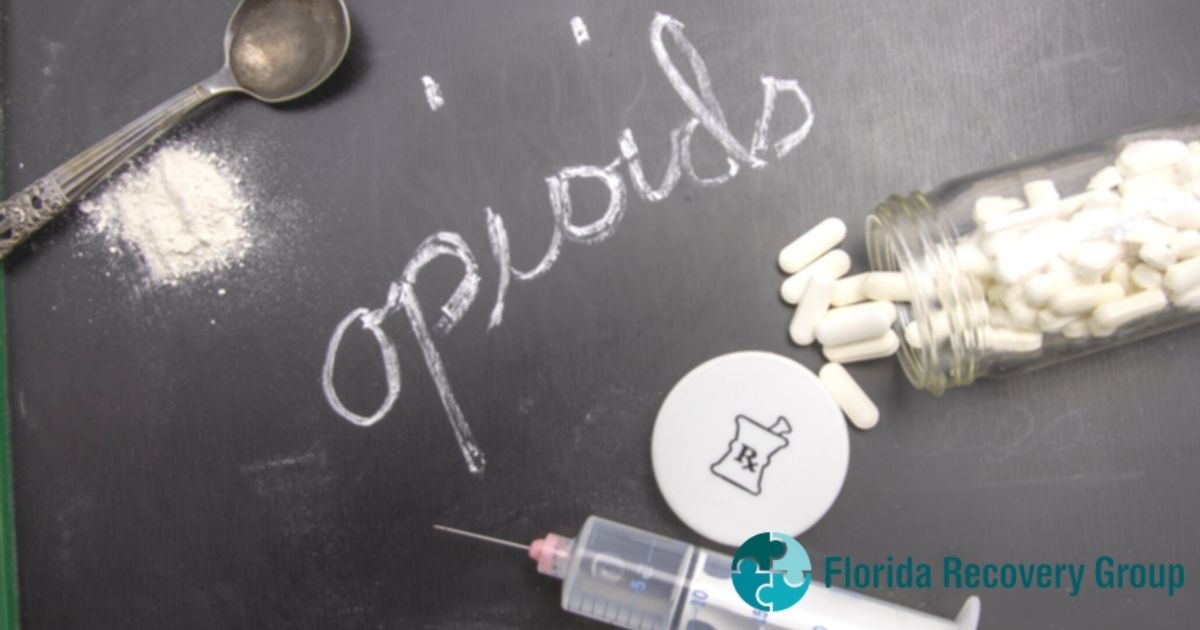
10 Nov What are Synthetic Opioids?
Synthetic opioids, such as fentanyl or carfentanil, refer to a class of psychoactive drugs that bind to opioid receptors and alleviate pain in the same way naturally occurring opiates do. While naturally occurring opioids are derived from the opium poppy plant, synthetic opioids are manufactured in labs and are designed to have the same chemical structure and effects as other opioids do.
The chemical makeup between the two types of opioids is strikingly similar, however, there are small variances that affect the way the drug works. Naturally, the man-made compounds that make up synthetic drugs are going to look somewhat different from those that are naturally occurring.
Common Types of Synthetic Opioids
According to the CDC, more than 31,000 overdose deaths occurred involving synthetic opioids in 2018. As such, more than 67% of opioid-related overdose deaths involved synthetic opioids. Oftentimes, street dealers will cut other substances with cheaper, synthetic substances. However, drug users don’t realize this, so they end up ingesting fentanyl or carfentanil when they think they are taking heroin. As a result, synthetic opioids are particularly dangerous when sold and abused on the streets.
Not all synthetic opioids are illicit substances. Some are used to treat moderate to severe pain in medical settings and can be highly effective when used correctly. Others are actually used to treat opioid dependencies, such as buprenorphine or methadone. Some examples of synthetic opioids include:
- Fentanyl
- Carfentanil
- Tramadol
- Methadone
- Buprenorphine
- Acetyl Fentanyl
- Butyrylfentanyl
- Furanylfentanyl
- 3-Methylfentanyl
- U-47700
Carfentanil is one of the strongest on this list as it is between 10,000 times more powerful than morphine. In fact, carfentanil is so powerful that it was originally created as an elephant tranquilizer. Unfortunately, it is often used as a cutting agent in heroin, causing users to overdose easily.
Dangers and Side Effects of Synthetic Opioids
When abused, these substances produce effects similar to those produced by naturally-occurring opioid analgesics like morphine. Common side effects include:
- Relaxation and euphoria
- Pain relief
- Sedation
- Confusion
- Drowsiness
- Constricted pupils
- Nausea and vomiting
Similarly, the overdose effects are similar to those produced by other opioids, including:
- Cold and clammy skin
- Coma
- Respiratory failure
- Slowed or stopped breathing
- Slowed heart rate
- Death
In general, the risks and dangers associated with opioid abuse are the same whether someone is taking a synthetic or naturally-occurring opioid. One key difference is that synthetic opioids are more likely to cause blood clots or damage to arteries, limbs, and veins if people are injecting them.
Furthermore, unregulated illicit synthetic drugs are manufactured in clandestine laboratories, so the chemical makeup and potency can vary from one batch to the next or from dealer to dealer. This makes abusing synthetic opioids extremely dangerous and riskier than abusing naturally-occurring opioids or those that are prescribed by a physician.
Medicinal Benefits of Synthetic Opioids
If so many naturally-occurring opioids are on the market, you may wonder what the need is for synthetics. Well, synthetic drugs have many advantages over naturally-derived opioids when it comes to the pharmaceutical industry. For example, synthetics can be made to have a higher potency at a lower cost, making medication more widely available with lower overhead costs. Additionally, there is no need for cultivation or plant harvesting, so products can be made faster, cheaper, and conveniently in a laboratory.
The Role of Synthetics in the Opioid Epidemic
The CDC reports that fatal drug overdoses rose by 10% between 2017 and 2018. While in previous years heroin and prescription opioids were responsible for the majority of opioid-related deaths, synthetic opioids began taking the lead in 2016. While prescription overdose deaths began declining in 2011, the second wave of the opioid epidemic involved drug trafficking and overdose deaths involving synthetic drugs and fentanyl analogs.
Unfortunately, there seems to be a connection between the first wave of prescription-opioid overdoses and the second wave of synthetic opioid overdoses. To explain, nearly 80% of people who use heroin first abused a prescription opioid, and between 4-6% of people who abuse prescription opioids will transition to heroin. As opioid users begin looking for a cheaper, more powerful high, some will turn to synthetics, fentanyl, or fentanyl analogs for a solution. As a result, this pattern perpetuates the opioid epidemic in the United States.
Most synthetic opioids are regulated by the DEA under the Controlled Substances Act. Fentanyl analogs, such as U-47700 and acetyl fentanyl, butyryl fentanyl, and more are all classified as Schedule I substances because they have medicinal use, but a high potential for abuse. On the other hand, Fentanyl and methadone are considered Schedule II drugs while Tramadol is a schedule IV drug. This is because synthetic opioids vary greatly in potency, abuse potential, and medicinal value. Still, these drugs are widely sold and abused in the streets across America.
Find Help for Opioid Addiction Today
Whether you’re addicted to methadone, heroin, fentanyl, or prescription painkillers, opioid addiction is a progressive and deadly illness that is difficult to overcome without professional treatment. First, detoxing can be painful and even life-threatening, so the first step towards recovery is to go to medical detox. During detox, you can take detox medications or taper off of opioids slowly so that your withdrawal symptoms aren’t too intense. After detox, you should participate in a comprehensive addiction treatment program. Here, you can learn the coping skills and resources you’ll need to stay sober.
If you or a loved one are ready to begin your journey to recovery, pick up the phone, and contact one of our dedicated addiction treatment professionals today.





